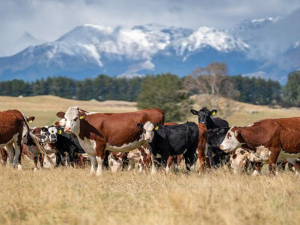Milk production is well past its spring peak, and product sales are focused on an April-June 2014 delivery period. Weather influences still have significant potential to ‘upset the apple cart’ at farm level (as we saw a year ago), but if anything this would drive prices higher.
New Zealand looks likely to enjoy an extended season as farmers cash in on record farmgate pricing; but the sustained supply recovery required to dislodge commodity prices is more likely to come from the Northern Hemisphere. That’s where attention is beginning to turn as the seasonal transition in supply looms.
Most in the industry had expected the US to produce a rapid supply response following a large 2013 corn harvest and rapidly increasing milk prices. This hasn’t happened - November and December milk output was virtually flat compared to the same months in 2012. Declining cow numbers have been blamed: heavy culling last year outweighed the supply of replacement heifers, and restocking is expected to take at least the first half of 2014. Feed is readily available but quality is below par in many places, keeping per-cow production relatively static, and hampering farmers’ ability to get the most milk from the cows they have.
Local sources suggest that with a bruising year behind them, US producers are more risk averse than historically, opting to bolster their equity position before pursuing expansion – a sentiment many Australian farmers would relate to.
Notwithstanding the challenges – including a worsening drought in California – growth is expected to accelerate through 2014 as margins remain favourable. The USDA’s forecast for 2014 US milk production is over 93 billion litres, representing 2% growth on 2013.
EU-November 28 data revealed a 4% increase in milk deliveries compared to that month in 2012. In member states such as the Netherlands and Ireland (the latter up 19% for the month) an appetite for post-quota growth is readily apparent, with some farmers willing to pay super-levy fines for exceeding quotas, rather than suppress production.
However ongoing challenges have seen further contraction in countries such as Italy. On balance, industry forecasts indicate the current modest growth trajectory is expected to continue, with 2014 milk deliveries tipped to hit 147 billion litres (up 1%).
The 2% and 1% growth for the US and EU respectively represent around 4 billion extra litres of milk – just under half of Australia’s annual total production. However, much of this growth will be soaked up by recovering domestic consumption, while continuing supply gaps in China and Russia have left other markets such as the Middle East, Africa and parts of Asia short of product.
In short, though the market is looking to the Northern Hemisphere for indications that a price correction is around the corner, sedate supply growth and ongoing demand strength provide little clue as to the timing. Pricing remains buoyant, with recent gains reflecting the flow-on effects from prioritisation of better returning product streams. However; with so many eyes on the prize, the question remains not if the world’s suppliers catch up to the demand for dairy, but when.
• John Droppert is industry analyst with Dairy Australia
















